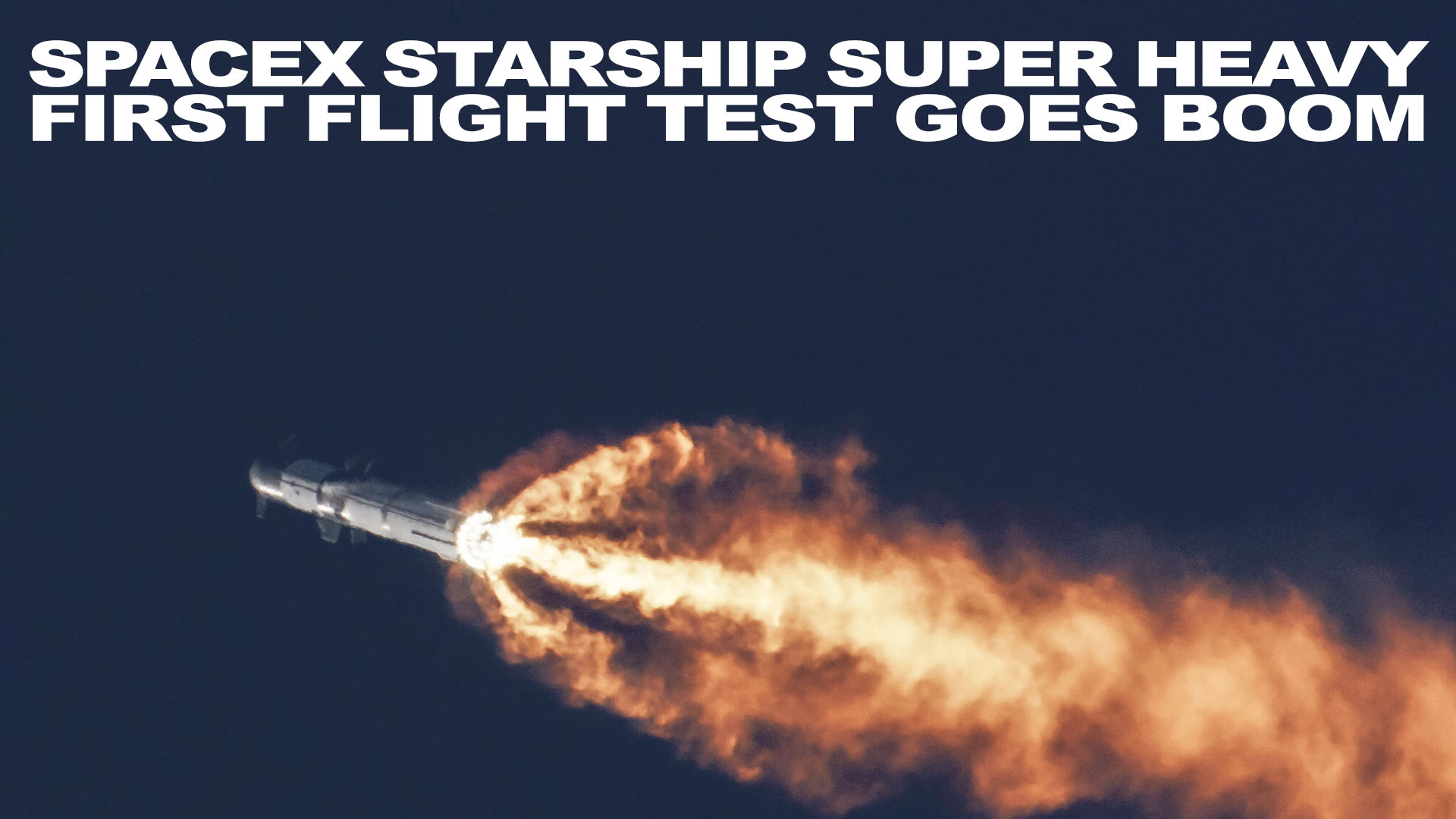SpaceX’s Starship Flight Termination Commands End Test Mission After Multiple Raptor Engine Failures

The SpaceX Starship Super Heavy first flight test moments after launch.
Photo of SpaceX Starship Super Heavy first flight test courtesy: SpaceX
SpaceX's Starship rocket system launched on Thursday but its first full stack test flight ended in fiery explosions over the Gulf of Mexico.
The Starship, a 165-foot-tall (50-meter) reusable upper stage designed to carry humans and cargo to the moon and Mars, was launched atop a massive Super Heavy booster from SpaceX's Starbase facility in Boca Chica, Texas. The entire booster-Starship integrated system, powered by 33 Raptor engines at the base of the Super Heavy, lifted off at 9:33 a.m. EDT (1333 GMT; 8:33 a.m. local time) and was supposed to separate Super Heavy from the Starship about three minutes later.
However, anomalies began to emerge very quickly during the ascent, and the two vehicles remained attached. SpaceX said in a statement that "the vehicle experienced multiple engines out during the flight test, lost altitude and began to tumble. The flight termination system was commanded on both the booster and ship."
A flight termination system is a safety feature that allows rocket launch operators like SpaceX to destroy a rocket if it poses a risk to people or property on the ground. The Federal Aviation Administration (FAA), which oversees commercial launches, confirmed that SpaceX sent the self-destruct signal after detecting the engine failures.
The Starship and Super Heavy exploded in sequential fireballs about four minutes after liftoff, reaching an altitude of about 24 miles (39 kilometers).
The launch also caused significant damage to the launch platform, which was not equipped with a flame trench to deflect the exhaust from the powerful rocket. SpaceX CEO Elon Musk had previously tweeted that he hoped to avoid building a flame trench at Starbase, saying it would be "too much work." Flame trenches are typically part of launch complexes to protect them from erosion and vibration.
Perhaps due to the omission of the the flame trench structure, debris from the launch rained down on the launch site and the nearby city of Port Isabel, sparking environmental concerns and complaints from local residents.
The test flight was intended to demonstrate Starship's ability to operate as a full stack multi-stage system and to graze the edge of Earth's atmosphere. It was not intended to be an orbital flight. SpaceX had planned to send the Starship into the Pacific Ocean near Hawaii had the vehicle continued around the globe. The Super Heavy booster was also supposed to return to Earth and hit the water in the Gulf of Mexico.
SpaceX has not announced when it will attempt another test flight of Starship. The company will likely have to wait until it and the FAA complete an investigation into the cause of the engine failures and other anomalies, and, repairs to the launch platform, and, or, changes like a flame trench addition, are complete.
SpaceX has been developing Starship for several years, hoping to eventually replace its Falcon 9 and Falcon Heavy rockets with a fully reusable system offering improved payload capabilities and operating economics. Starship is also part of NASA's Artemis program to land humans on the moon by 2024, and Musk's very public desire to colonize Mars.

Craig has decades of experience contributing to Flight International, Aviation Week, KCRW, NPR, and appearances on the Discovery, Military and History Channels.

 Welcome to AeroSpaceNews.com, the world's first
Welcome to AeroSpaceNews.com, the world's first